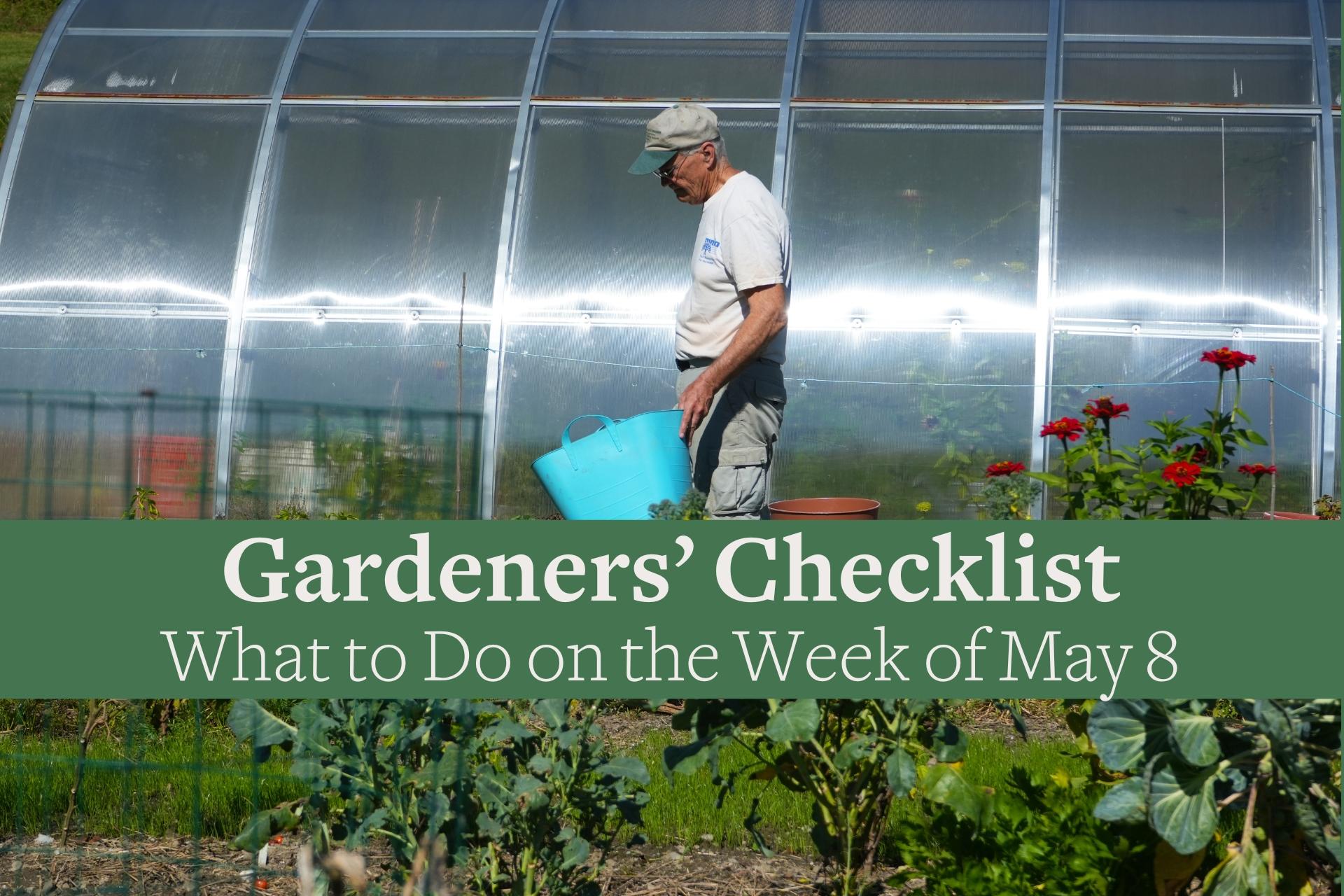You are here
Gardeners Checklist: Here Is What to Do on the Week of May 8
Gardeners Checklist: Here Is What to Do on the Week of May 8
By Ron Kujawski
* Look for clusters of grayish-green caterpillar-like critters on needles of Scotch, mugo, red, jack, white, and Austrian pines. These critters are larvae of the European Pine Sawfly. The larvae are capable of devouring the needles on these pines. Fortunately, they only feed on last year’s needles. New needles that form in the current year are typically spared. However, with old needles gone, the pine takes on a “poodle look” — a tuft of needles only near the tip on an otherwise naked branch. Control can be had by simply smushing the larvae between your fingers, or knocking them to the ground and doing the Bristol Stomp.
* Put on your knickers, grab your favorite weeding tool and get weeding. Biennial and certain annual weeds are now flowering and will be dropping their seeds soon thereafter. Dropped seeds mean more weeds. A single plant of some weeds can produce thousands of seeds. That’s scary!
* Sharpen mower blades if not done prior to the start of mowing season. A mower with a sharp blade uses less fuel than one with a dull blade.
* Attract butterflies to your yard by planting coneflowers, Russian sage, Joe-Pye weed, butterfly weed (Asclepsias), beebalm, and catmint.
* Plant lavender with roses. They make a great combination in the perennial border. The fragrance will knock your socks off - shoes too!
* Scout vegetable crops for flea beetles, asparagus beetles, Colorado Potato Beetles, and cutworms. Hand pick asparagus and potato beetles; set up yellow sticky traps for flea beetles; and apply Bt (e.g. Dipel, Thuricide, Safer’s Caterpillar Killer) for cutworm control.
* * *
This is a tricky time for vegetable gardeners. Now that we are near mid-May, there is a strong temptation to plant warm season crops, i.e. beans, corn, squash, cucumbers, tomatoes, peppers. There are three good reasons not to:
1. There is still a 50/50 chance of frost — not good odds.
2. Warm season crops are mostly of tropical or sub-tropical origin — they like it warm. Even if we don’t get a frost later this month, night-time temperatures often dip into the forties or lower. Exposure to such chilly weather slows the growth of these crops, delays their development and often results in lower yields.
3. Soil temperature for warm season crops should be at least 60 degrees F for optimal seed germination and root development of seedlings. That may not happen until June. So, should we wait? Nah! Go ahead and plant…. BUT cover this first sowing of seeds of sweet corn, beans, squash, and cucumbers with a row cover such as ReemayTM. A row cover warms the soil and provides a warm environment for emerging seedlings. Just the same, save the bulk of your seed for later plantings. With regard to seedlings such as tomatoes, peppers, squash, and cucumbers, I’ll wait until Memorial Day or later to transplant them, depending upon soil and air temperature. Soil can be warmed ahead of transplanting by laying black plastic on the soil, seven to 10 days before planting.
Ron Kujawski began gardening at an early age on his family's onion farm in upstate New York. Although now retired, he spent most of his career teaching at the UMass Extension Service. He serves on Berkshire Botanical Garden’s Horticulture Advisory Committee. His book, Week-by-Week Vegetable Gardener’s Handbook, is available here.
Help Our Garden Grow!
Your donation helps us to educate and inspire visitors of all ages on the art and science of gardening and the preservation of our environment.
All Donations are 100 percent tax deductible.



